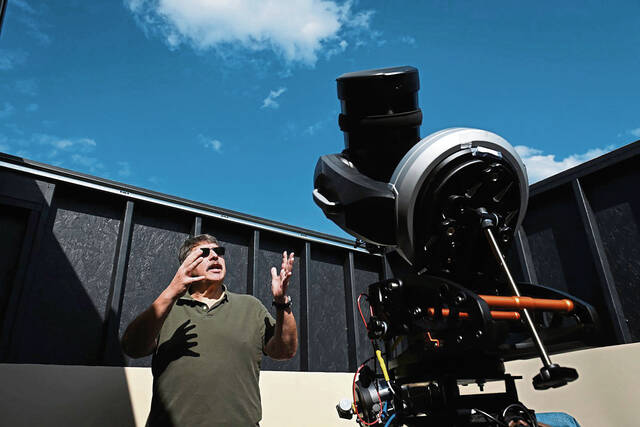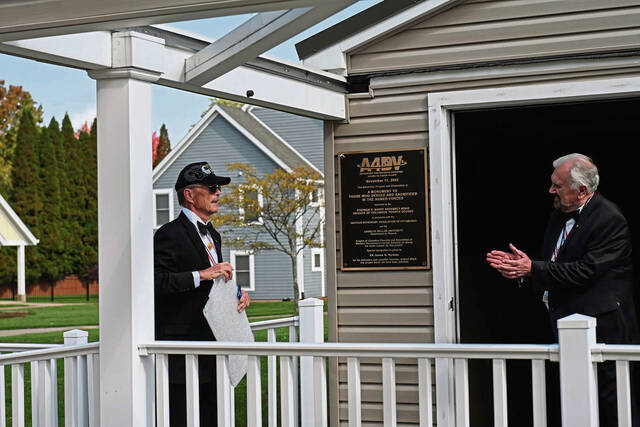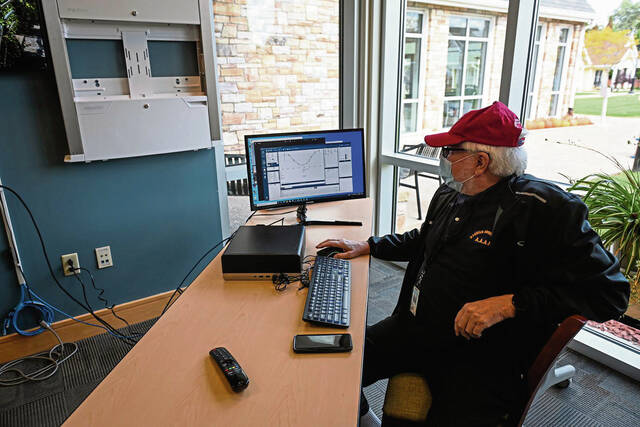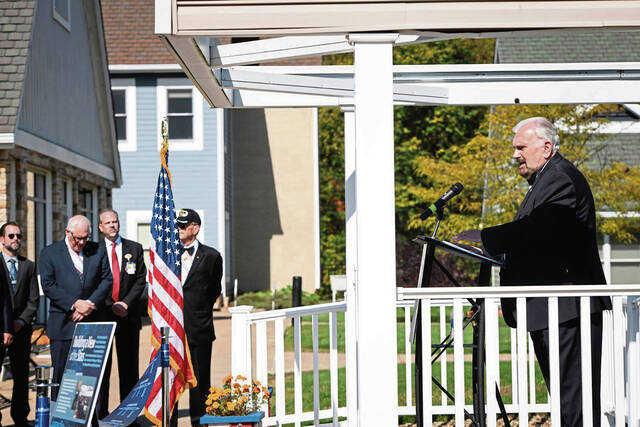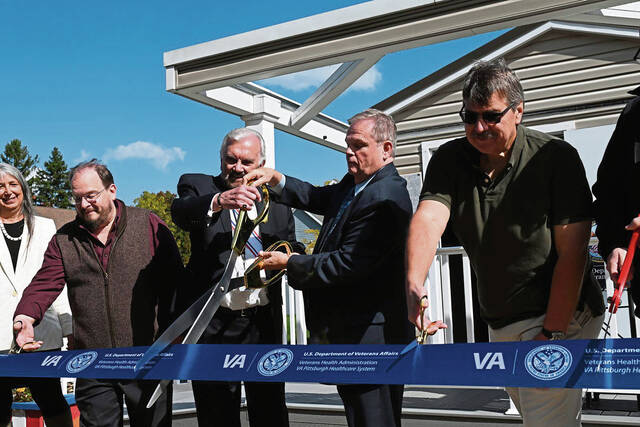Unique observatory in O'Hara opens galaxy of opportunity
Patients at the H.J. Heinz III campus of the VA Pittsburgh Healthcare System are defying physical limitations to study the mysteries of the skies thanks to the opening of an observatory at the O’Hara campus.
The Sky Shed Observatory is the first of its kind in VA systems across the country, Executive Director Donald Koenig said.
“This is a huge step forward to improve the life of our veterans,” he said. “They are thoroughly enjoying it so far.”
The project includes a 12-by-16-foot wheelchair-accessible shelter with a motorized roof, a Celestron telescope and other standalone equipment.
The telescope is preprogrammed with coordinates for more than 200,000 star locations.
Conduits were built to provide indoor viewing for patients with mobility issues or other limitations. They can sit and watch celestial images broadcast on a 65-inch screen in a gathering room at the Veteran Recovery Center adjacent to the observatory.
James Surman, a Plum resident and certified hospital management consultant who spearheaded the project, said it opens a galaxy of opportunity for hospitalized vets with varied medical issues.
“No matter what they are able to do, we have set it up so that everyone can participate,” Surman said. “When we were building this, everyone would go past and ask when it would be up and running. There is a high level of excitement.”
The H.J. Heinz campus is home to a 262-bed community living center and an ambulatory care center with outpatient services. There also is a 65-bed Veterans Recovery Center and 31 psychiatric residential rehabilitation treatment beds.
Surman, veterans services chairman for the Knights of Columbus in West Mifflin, was joined in 2016 by then-VA head nurse Nick Haller to lobby for the observatory.
The pair cited VA psychiatrist Alan Teo’s study that 84% of returning veterans show signs of depression.
“Nighttime is the loneliest time for them, so we wanted an activity to introduce a new skill and promote socialization,” Surman said.
The Astronomy for Disabled Veterans project is a combined effort by the Stephen P. Barry Knights of Columbus Assembly No. 940, the Amateur Astronomers Association of Pittsburgh, based in West Deer, and Carnegie Mellon University.
Much of the fundraising was tackled by 28 Knights of Columbus councils, which hosted spaghetti dinners and raffles that brought in $31,000.
“I put together my ‘A Team,’ and they went to work,” Surman said.
“Everywhere they visited, people opened up the checkbook. They love our vets.”
Members of the AAAP donated $16,000 in equipment, as well as training and books to build an astronomy library for hospitalized vets. Materials will include Science Channel astronomy videos, the monthly “Star Guide” newsletter and the monthly Astronomy magazine.
Carnegie Mellon professor Diane Turnshek, also an AAAP member, has committed to help build a teaching program where graduate students will organize “star parties” for veterans to gaze at the heavens, both outdoors and from inside.
“A lot of the patients can’t look through the eyepiece, so we attached two cameras to the telescope and digitized everything to make sure everyone can participate,” Surman said.
Koenig said the project offers veterans a chance to reach for the stars.
“For our patients who are still somewhat restricted in their ability to travel (out of the nursing facility), this allows them to enjoy aspects of the outside world and is a nice, safe bridge to all that this project has to offer,” he said.
Interest and excitement about the project has spread quickly through the VA Pittsburgh Healthcare System and at facilities across the region, Koenig said. The next phases of the plan will be to make the images accessible and stir others’ interest in the “beauty and wonder of the heavens,” he said.
Once the signal is wired into the cable system, images can potentially be shared with patients in Erie, Philadelphia and beyond.
“Our veterans are loving it already,” Koenig said.
A star party was hosted after the ribbon-cutting ceremony Friday, and Koenig said patients already are asking when the next one will be scheduled.
“There were more than 20 vets that attended our first one,” Surman said. “By midnight, we had to tell them it was time to go to bed.”
Tawnya Panizzi is a TribLive reporter. She joined the Trib in 1997. She can be reached at tpanizzi@triblive.com.
Remove the ads from your TribLIVE reading experience but still support the journalists who create the content with TribLIVE Ad-Free.

